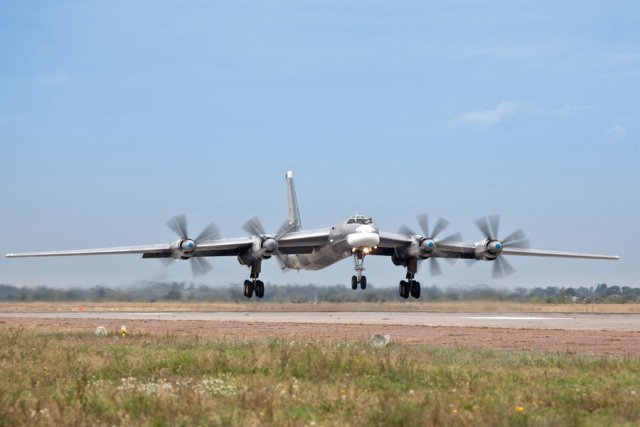| a | |||
|
|
|||
|
World Defense & Security News - Russia
|
|||
|
|
|||
|
Russia's Tu-95MS bomber to be fitted with new computing subsystem
|
|||
|
The Russian strategic missile carrier aircraft Tu-95MS will be able to receive target coordinates in flight in real time and immediately destroy them with a missile strike. They will get such a capability due to the installation of a specialized computing subsystem (SVP), developed and manufactured by Gefest and T Company.
|
|||
|
|
|||
 A RusAF Tu-95MS strategic bomber A RusAF Tu-95MS strategic bomber(Credit: UAC/Tupolev) |
|||
|
|
|||
|
At present, target coordinates are entered into the memory of missiles at the airfield before the missile carrier aircraft takes off. According to experts, the new system dramatically increases Russian combat aircraft’s capabilities to find and destroy targets in real time, the daily Izvestia writes.
The principle of the new system is quite simple. Servicemen on the ground communicate the target coordinates to the aircraft via a special terminal. The onboard SVP system calculates all the parameters and feeds the flight mission into the missile’s seeker. Then the Tu-95MS crew just has to fire the missile. As Izvestia was told at the Defense Ministry, until recently the project of equipping the Tu-95MS fleet with the SVP system was implemented by Gefest and T in a proactive manner. But now these works have been included in the long-term plan for the development of Russian long-range aviation. Gefest and T told Izvestia that the work on equipping the Tu-95MS with the SVP system was underway, but refrained from further comment. To date, Russia’s Su-24M front-line bombers, Su-33 shipborne fighters, and Tu-22M3 long-range bombers have been equipped with the specialized computing subsystem. They demonstrated unique effectiveness during the Russian Aerospace Forces’ operation in Syria. Owing to the SVP, aircraft can use conventional unguided bombs to destroy enemy targets with accuracy comparable to guided airborne weapons. On the ground, the targets for bombers and fighters are discovered by the Special Operations Forces’ soldiers, who indicate the point to be hit on the electronic map, as well as the target parameters. Then the information is communicated to the aircraft. According to expert Anton Lavrov, the SVP is often considered an ordinary sight. But in fact it is network-centric automated command and control system (in which all participants are integrated into a single information system). There is a continuous real-time exchange of information in the SVP between ground forces and aviation. "Currently, Russian Aerospace Forces use cruise missiles only against previously detected targets," Lavrov said. The SVP seriously increases the Russian combat aviation’s capabilities to find and destroy targets in real time. A SVP-equipped Tu-95MS can be in the air for up to 30 hours and conduct combat patrols. At any time, its crew will deliver high-accuracy strikes at a request of the ground forces at a distance of up to 1,500 km." As noted by the expert, the SVP-equipped Tu-95MS are needed for operations when the targets are very far from the home airfields of Russian combat aircraft. They will be especially useful for Russia’s Aerospace Forces in local wars and low-intensity armed conflicts. Also, these planes will be able to effectively support the raids of special operations forces, the daily Izvestia writes. |
|||
|
|
|||
|
© Copyright 2015 TASS. All rights reserved. This material may not be published, broadcast, rewritten or redistributed.
|
|||
















